The Cotswolds and the North Wessex Downs
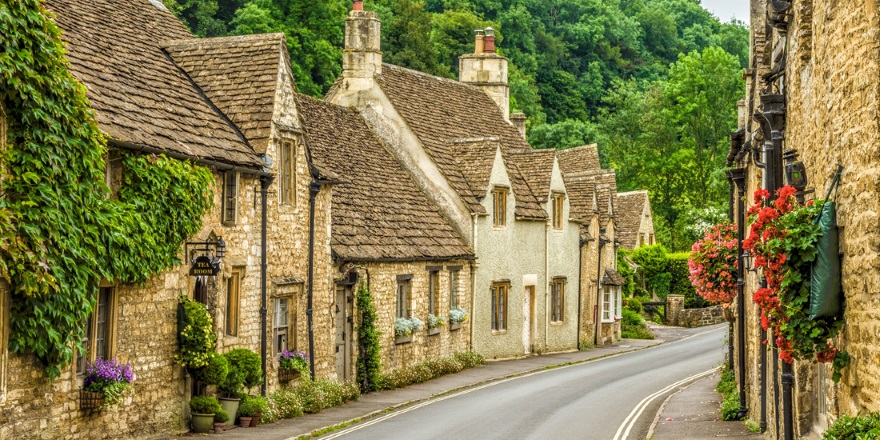 The Cotwolds and the Wessex Downs are areas of outstanding beauty, crossing ten
English county borders, noted for their rolling hills,
beautiful villages, churches and stately homes built of distinctive local yellow
limestone. The villages were seen by their dwellers as functional, a necessity, just a roof over their head, today
those same villages are a signature of a different time. We're are going to turn back
the clock, loosely following the old Midland & South Western Junction Railway
(M&SWJR), jumping on and off the old route for two days, exploring these forgoten places. In contrast
the Romans introduced the idea of living in big towns and cities, but they too knew the value of
the countryside, so we will be visiting two Roman retreats that functioned not far from
two millennium ago. It's going to be two great days of sight seeing, exploring and riding (or
that's what I thought was going to happen anyway).
The Cotwolds and the Wessex Downs are areas of outstanding beauty, crossing ten
English county borders, noted for their rolling hills,
beautiful villages, churches and stately homes built of distinctive local yellow
limestone. The villages were seen by their dwellers as functional, a necessity, just a roof over their head, today
those same villages are a signature of a different time. We're are going to turn back
the clock, loosely following the old Midland & South Western Junction Railway
(M&SWJR), jumping on and off the old route for two days, exploring these forgoten places. In contrast
the Romans introduced the idea of living in big towns and cities, but they too knew the value of
the countryside, so we will be visiting two Roman retreats that functioned not far from
two millennium ago. It's going to be two great days of sight seeing, exploring and riding (or
that's what I thought was going to happen anyway).
Day 1- Cheltenham to Swindon (38 miles)
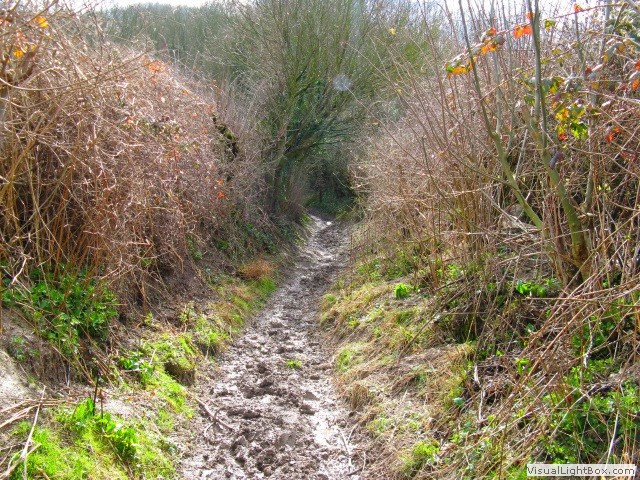 It’s pot luck planning a ride, as you’ve no idea what the weather is going to be
like in three month's time, and we’ve just had a week of heavy rain, so I expect a soggy ride. I caught the
early train to Cheltenham, but there’s so much to
see today, I don’t know if I’m going to fit it all in. Arriving at ten to an unassuming plain
little station building, with no time to waste, I was off to Sandy Lane crossing an old GWR
route and over the old Leckhampton Quarry tram road, through Lilley Brook
golf course. The ridable lane turned into a very steep- no I’ll change that to ridiculously
steep, muddy boulder strewn bridle path. Not a good start to an adventure, this led on
to an old chalk path and onto the ‘Cotswold Way’ walking path. A little stint across a
main road followed by a small climb to ‘Upper Coberley’, now Cheltenham township was well
behind.
It’s pot luck planning a ride, as you’ve no idea what the weather is going to be
like in three month's time, and we’ve just had a week of heavy rain, so I expect a soggy ride. I caught the
early train to Cheltenham, but there’s so much to
see today, I don’t know if I’m going to fit it all in. Arriving at ten to an unassuming plain
little station building, with no time to waste, I was off to Sandy Lane crossing an old GWR
route and over the old Leckhampton Quarry tram road, through Lilley Brook
golf course. The ridable lane turned into a very steep- no I’ll change that to ridiculously
steep, muddy boulder strewn bridle path. Not a good start to an adventure, this led on
to an old chalk path and onto the ‘Cotswold Way’ walking path. A little stint across a
main road followed by a small climb to ‘Upper Coberley’, now Cheltenham township was well
behind.
We arrive into Withington village, its narrow streets and limestone cottages make it a pretty hamlet, but small as it maybe, up until 1961, Withington had a railway station on the M&SWJR. We pass the Mill Inn before heading off again passing a railway abutment of the old line, then loosely following the river Coln, less than a mile away is ‘Chedworth Roman villa’. I peaked through the glass of the cafe and my face dropped, I have become sensitized to noisy environments, but needed a transfusion of coffee, so I locked the bike up and walked in. Only to be met with a bus load of kids and worse; a gaggle of ramblers all talking too loud (most were on the wrong side of seventy) making their hearing aids whistle. I gulped the coffee down and left without even walking around the remains. I rolled down the hill and the garmin beeped for change of direction. I’ve had many years experience with clipless pedals and was confronted with a tight turn where either a simple push on the pedal or take my foot out would have done the trick; I did neither and fell off. The route went through a gate and had a sign prohibiting cyclists, bruised and battered I went in. It looked like a permissive road for walkers but all along it was wide enough for a bus.
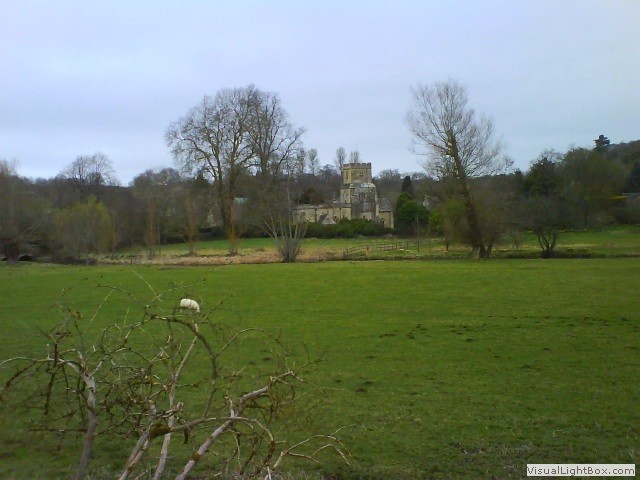 The road became straight, possibility remnants of a Roman route along the alluvial channel of the
river Coln, it gently undulates, not enough to get out of the seat, but just enough to change
down a gear. We cross the river at Fosse Bridge and roll into ‘Coln St Dennis’, the view across
the water meadows from the church of St James is one of the most perfectly idyllic sights in the
Cotswolds. Through Winson and into Ablington, here is Ablington Manor built in 1590, originally
owned by the church, and set in extensive grounds, but rarely open to the public. From here, I'm
heading towards the charming hamlet of Bibury, labelled 'the most beautiful village in England' and is one of
England’s most iconic and photographed sites.
The road became straight, possibility remnants of a Roman route along the alluvial channel of the
river Coln, it gently undulates, not enough to get out of the seat, but just enough to change
down a gear. We cross the river at Fosse Bridge and roll into ‘Coln St Dennis’, the view across
the water meadows from the church of St James is one of the most perfectly idyllic sights in the
Cotswolds. Through Winson and into Ablington, here is Ablington Manor built in 1590, originally
owned by the church, and set in extensive grounds, but rarely open to the public. From here, I'm
heading towards the charming hamlet of Bibury, labelled 'the most beautiful village in England' and is one of
England’s most iconic and photographed sites.
Passing some trout farms, my gears began to jump from one to another without me touching the levers, on inspection the leading jockey wheel bearing had collapsed. I pulled into the Swan hotel and asked this very posh place if they minded me trying to fix my bike in their courtyard. They were immensely accommodating bringing out an endless supply of coffee. I swapped the top and bottom jockey wheels (a temporary fix), paid for the coffee and left to visit the rest of Bibury. We travel to Poulton past many new houses built in sandstone to keep region looking the same, but it’s self defeating as it’s obvious. It’s only when you arrive at village you can see the age of the property’s, with their mortice cornerstones and sagging tiled roofs. We turn right into ‘Down Ampney’ which seems to be a more recent area, crossing the A419 into the old Saxon parish of Cerney Wick, the village lies within the Cotswold Water Park, an area made up of over 140 lakes, mostly formed by gravel extraction.
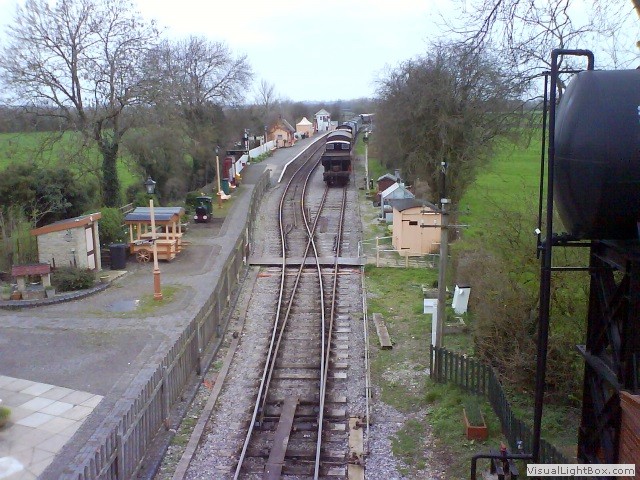 At the Crown pub there’s a hidden path directly opposite which takes us onto NCR 45 the
old M&SWJR, but not without a great pain in the backside, crossing five swing gates, one
horse trap, and up and over a sand conveyor on makeshift steps to reach a disappointing muddy
track. We pass through Cricklade and back on to the old railway route for about a ¼
of a mile, until the defunct railway line becomes active again, taken over by the Swindon &
Cricklade heritage railway. I was after a coffee at the Whistlestop Café at Blunsdon Station, but
it’s only open on Sundays. It will have to wait, as it's only four miles to Swindon ‘steam museum’.
Swindon was a massive centre for building locomotives, and this museum is something I’ve wanted to
see for ages. This is the Museum of the Great Western Railway (£9.35), placed in the heart of
the former Swindon Railway Works. I stayed there until I was kicked out then headed for my stop
for the night, the Swindon travelodge, still the cheapest hotel in the city.
At the Crown pub there’s a hidden path directly opposite which takes us onto NCR 45 the
old M&SWJR, but not without a great pain in the backside, crossing five swing gates, one
horse trap, and up and over a sand conveyor on makeshift steps to reach a disappointing muddy
track. We pass through Cricklade and back on to the old railway route for about a ¼
of a mile, until the defunct railway line becomes active again, taken over by the Swindon &
Cricklade heritage railway. I was after a coffee at the Whistlestop Café at Blunsdon Station, but
it’s only open on Sundays. It will have to wait, as it's only four miles to Swindon ‘steam museum’.
Swindon was a massive centre for building locomotives, and this museum is something I’ve wanted to
see for ages. This is the Museum of the Great Western Railway (£9.35), placed in the heart of
the former Swindon Railway Works. I stayed there until I was kicked out then headed for my stop
for the night, the Swindon travelodge, still the cheapest hotel in the city.
Day 2- Swindon to Newbury (33 miles)
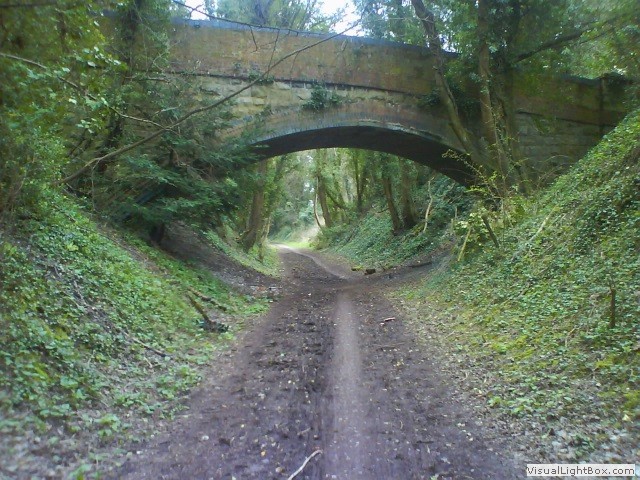 Swindon has a great network of cycle paths, and I’m riding out from the town on a traffic free path heading for Coate
Water Park, the last remaining pocket of unspoilt countryside close to Swindon. Coate reservoir
was built in the 1820s as a headwater tank for the Wiltshire and Berkshire Canal, now used for
fishing and water sports. We cycle through the park in the direction of Chiseldon and onto a
dedicated path that runs alongside the A346 on the old M&SWJR again. During WW2 the Americans
were stationed in large numbers at the then-named Chiseldon Camp and this part of the line was
extensively used for military transportation. Heading southbound through Ogbourne St George,
Ogbourne St Andrew, and Ogbourne Maizey skirting around Marlborough, and then into the centre.
The jewel of the town's High Street is the Merchant's House, built and occupied by a prosperous
silk merchant, it contains nationally acclaimed wall paintings and decorative features.
Swindon has a great network of cycle paths, and I’m riding out from the town on a traffic free path heading for Coate
Water Park, the last remaining pocket of unspoilt countryside close to Swindon. Coate reservoir
was built in the 1820s as a headwater tank for the Wiltshire and Berkshire Canal, now used for
fishing and water sports. We cycle through the park in the direction of Chiseldon and onto a
dedicated path that runs alongside the A346 on the old M&SWJR again. During WW2 the Americans
were stationed in large numbers at the then-named Chiseldon Camp and this part of the line was
extensively used for military transportation. Heading southbound through Ogbourne St George,
Ogbourne St Andrew, and Ogbourne Maizey skirting around Marlborough, and then into the centre.
The jewel of the town's High Street is the Merchant's House, built and occupied by a prosperous
silk merchant, it contains nationally acclaimed wall paintings and decorative features.
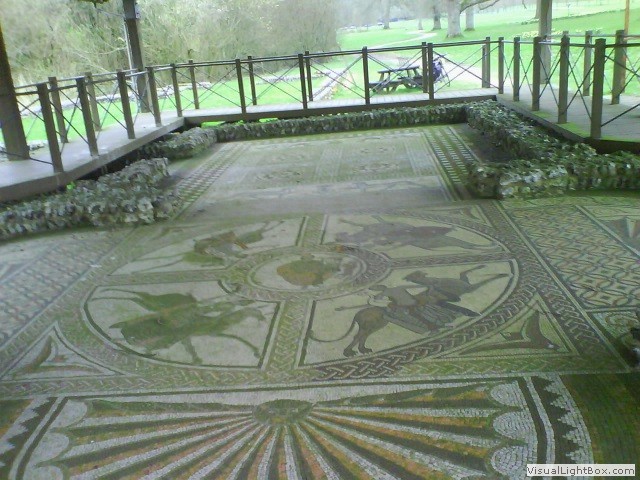 After a swift coffee my route takes a spiral out of Marlborough crossing over the top of the
railway path we arrived in on and continued to Mildenhall and Stitchcombe. We cross the River
Kennet at Ramsbury and turn south east on a footpath leading to Littlecote Roman Villa and
Littlecote Tudor Mansion. Littlecote Roman Villa is a stand alone tourist attraction, but next
door is the grade I listed Tudor manor house and this has a truly unique story. I had a coffee
there in this exclusive hotel and felt a little awkward in my smelly cycling gear.
After a swift coffee my route takes a spiral out of Marlborough crossing over the top of the
railway path we arrived in on and continued to Mildenhall and Stitchcombe. We cross the River
Kennet at Ramsbury and turn south east on a footpath leading to Littlecote Roman Villa and
Littlecote Tudor Mansion. Littlecote Roman Villa is a stand alone tourist attraction, but next
door is the grade I listed Tudor manor house and this has a truly unique story. I had a coffee
there in this exclusive hotel and felt a little awkward in my smelly cycling gear.
Now turning south over the Kennet & Avon canal to enter Hungerford High Street, the buildings look like they were constructed in the 1950’s, a prominent feature is the clock on the town hall which can be seen from the Grade II listed canal bridge. The main Road through the town had a considerable effect on the town's growth and development in the 17th century, with many coaching inns, stables, and blacksmiths set up around the town. Hungerford is promoted today for its antique shops, but the town can’t seem to abdicate from its recent infamous past. We turn onto the Kennet & Avon canal heading east, and crossover the canal at Dun Mill Lock. It’s downhill on the canal passing lock after lock and Pill box's galore to Kintbury, but the path is muddy and barely ridable. At Benham Weir the canal crosses over the river Kennet and we continue downhill past several locks into Newbury our stop for tonight. Again we’re staying at a Travelodge, this one was an absolute bargain at £22.
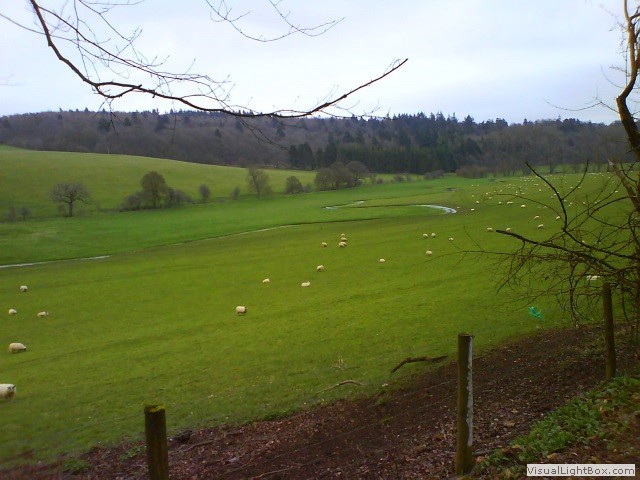 On both days the weather was colder than forecast, but I suppose we have to be grateful
for no rain. People get disappointed when all they see is a Roman mosaic, Chedworth Roman
villa, and Littlecote Roman Villa are incredible time capsules. The ride paralleling the
Coln river is truly exceptional and is a must even if you just do this. The whole event was
assembled after seeing Bibury on TV, I had to go there, but not in the summer when it’s teeming
with tourists. It’s a must to see the famous Arlington Row, it’s like seeing an oil painting in
real time where a row of wonky cottages are nestled next to a little stream, though in fairness,
many of the Cotswold villages were just as pretty. Apart from the first seven miles, it was
two days of fairly flat cycling, but I was disappointed with Midland & South Western Junction
Railway path, some of the route was barely ridable. The highlight had to be the Steam museum, not
the best two days, but still worth doing.
On both days the weather was colder than forecast, but I suppose we have to be grateful
for no rain. People get disappointed when all they see is a Roman mosaic, Chedworth Roman
villa, and Littlecote Roman Villa are incredible time capsules. The ride paralleling the
Coln river is truly exceptional and is a must even if you just do this. The whole event was
assembled after seeing Bibury on TV, I had to go there, but not in the summer when it’s teeming
with tourists. It’s a must to see the famous Arlington Row, it’s like seeing an oil painting in
real time where a row of wonky cottages are nestled next to a little stream, though in fairness,
many of the Cotswold villages were just as pretty. Apart from the first seven miles, it was
two days of fairly flat cycling, but I was disappointed with Midland & South Western Junction
Railway path, some of the route was barely ridable. The highlight had to be the Steam museum, not
the best two days, but still worth doing.
-
Gallery
 Why not have a look at the gallery relating to this ride. Click the image or the title.
Why not have a look at the gallery relating to this ride. Click the image or the title. -
Leckhampton Quarry tramroad
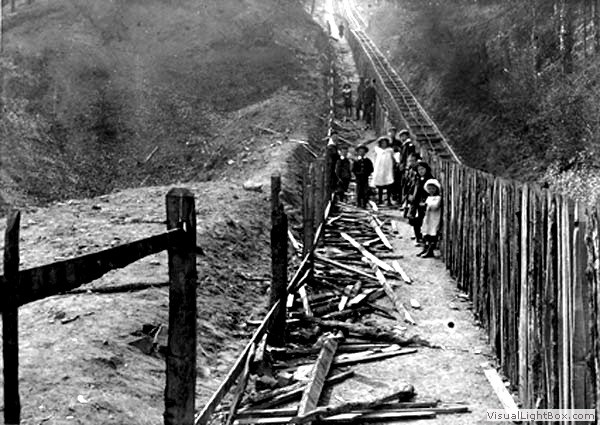 In 1894 the Leckhampton Quarry Company Ltd built a tramroad cutting off public rights of
way. The locals rioted and tried to pull down the fences. The image is of the actual
damage, the ringleaders were arrested and sent to Gloucester Prison.
In 1894 the Leckhampton Quarry Company Ltd built a tramroad cutting off public rights of
way. The locals rioted and tried to pull down the fences. The image is of the actual
damage, the ringleaders were arrested and sent to Gloucester Prison. -
Chedworth Roman villa
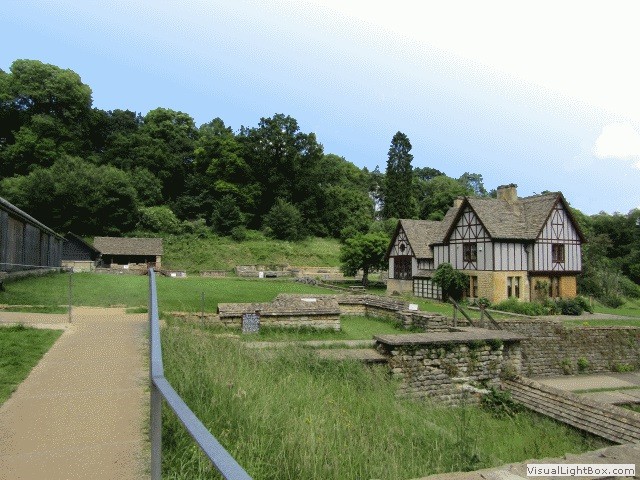 One of the largest Roman villas in Britain was accidentally discovered in 1864 by a
gamekeeper, it was soon excavated and put on display, later acquired by the National
Trust in 1924. A modern conservation building provides exceptional access (£10.50)
to the extensive mosaic floors, hypocaust systems and bathhouse rooms. There’s a small
museum which houses a range of finds and artefacts from the villa.
One of the largest Roman villas in Britain was accidentally discovered in 1864 by a
gamekeeper, it was soon excavated and put on display, later acquired by the National
Trust in 1924. A modern conservation building provides exceptional access (£10.50)
to the extensive mosaic floors, hypocaust systems and bathhouse rooms. There’s a small
museum which houses a range of finds and artefacts from the villa. -
Winson
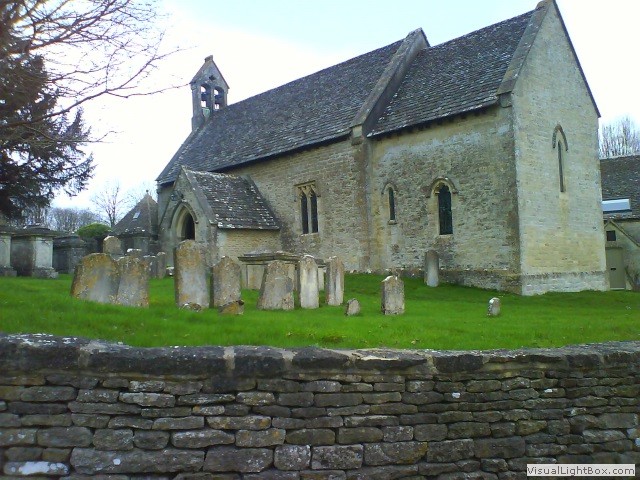 Riding through Winson, a dozen pedal revolutions and you’d pass a manor house, chapel,
and church school. Whilst the 12th century church is small compared to its siblings in
neighbouring villages, it’s still worth a look, and the churchyard has some handsome tombs.
Riding through Winson, a dozen pedal revolutions and you’d pass a manor house, chapel,
and church school. Whilst the 12th century church is small compared to its siblings in
neighbouring villages, it’s still worth a look, and the churchyard has some handsome tombs. -
RAF Down Ampney
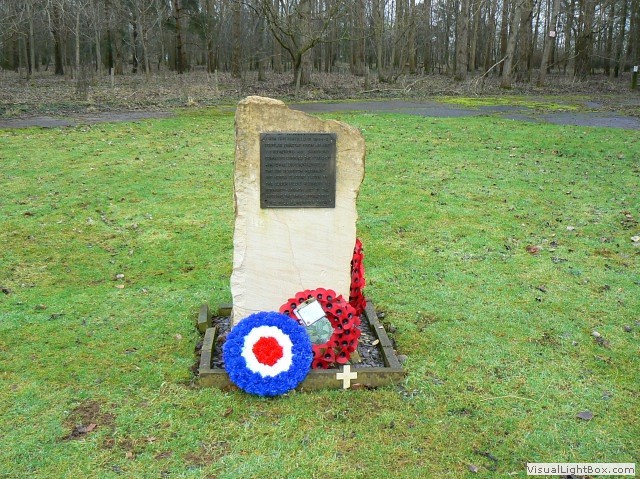 At Down Ampney airport on D-Day No. 48 RAF Squadron and No. 271 RAF Squadron dropped the main
elements of the 3rd Parachute Brigade in Normandy, they flew in Douglas Dakotas which towed the
Horsa gliders. The airfield was closed soon after the war and is now a farm, the runways are
still there along with a memorial.
At Down Ampney airport on D-Day No. 48 RAF Squadron and No. 271 RAF Squadron dropped the main
elements of the 3rd Parachute Brigade in Normandy, they flew in Douglas Dakotas which towed the
Horsa gliders. The airfield was closed soon after the war and is now a farm, the runways are
still there along with a memorial. -
Swindon STEAM museum
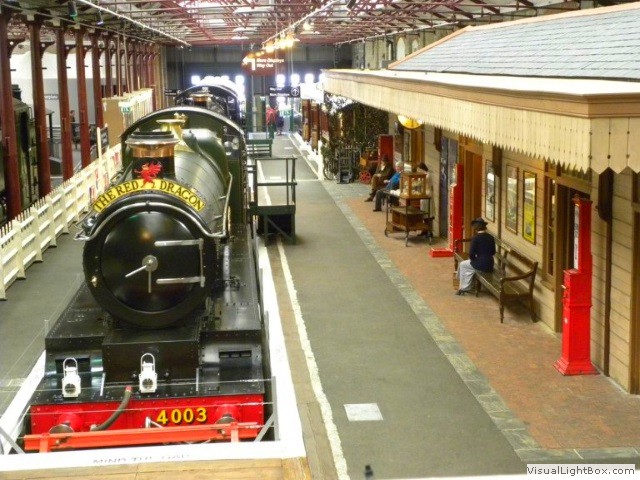 In 1843, the new Swindon railway works employed 400 men,
including skilled engineers. The company constructed a workers
village, a Mechanics Institution, a Medical Fund Society and St Mark's Church
for their workers. The museum has famous GWR locomotives, rare GWR objects, memorabilia, and
is brought to life with the stories of ex-railway workers. The works survived 123 years
shutting in 1986, in the decade of death of British industry.
In 1843, the new Swindon railway works employed 400 men,
including skilled engineers. The company constructed a workers
village, a Mechanics Institution, a Medical Fund Society and St Mark's Church
for their workers. The museum has famous GWR locomotives, rare GWR objects, memorabilia, and
is brought to life with the stories of ex-railway workers. The works survived 123 years
shutting in 1986, in the decade of death of British industry. -
Marlborough High Street
 Marlborough boasts of the second widest High Street in Britain. In 1204 King John granted Charter to
the Borough which permitted an annual eight day fair, this pledged future councils not to build
on the centre of the street so a fair can visit.
Marlborough boasts of the second widest High Street in Britain. In 1204 King John granted Charter to
the Borough which permitted an annual eight day fair, this pledged future councils not to build
on the centre of the street so a fair can visit. -
Littlecoate Manor
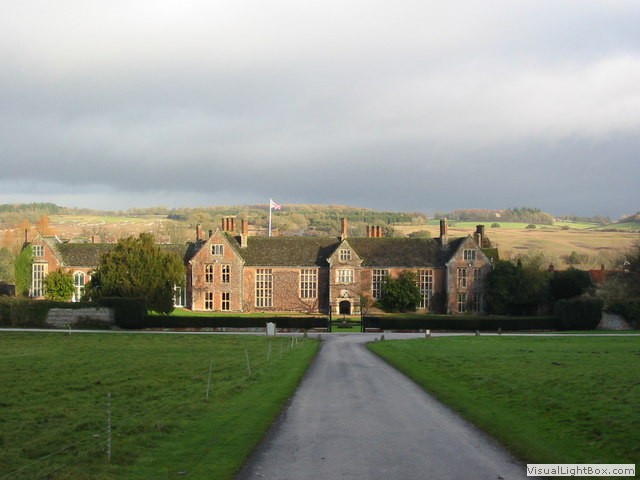 Built in the mid-1500s, this is a beautiful Grade I listed Tudor manor. The stunning location has
played host to occupying Romans, a Tudor tryst and even a Civil War army. Henry VIII courted Jane
Seymour here, and the D-Day landings were planned within the house. England’s last remaining
Cromwellian Chapel is also here, a hell of a lot of history.
Built in the mid-1500s, this is a beautiful Grade I listed Tudor manor. The stunning location has
played host to occupying Romans, a Tudor tryst and even a Civil War army. Henry VIII courted Jane
Seymour here, and the D-Day landings were planned within the house. England’s last remaining
Cromwellian Chapel is also here, a hell of a lot of history. -
The Kennet & Avon canal pill-boxs
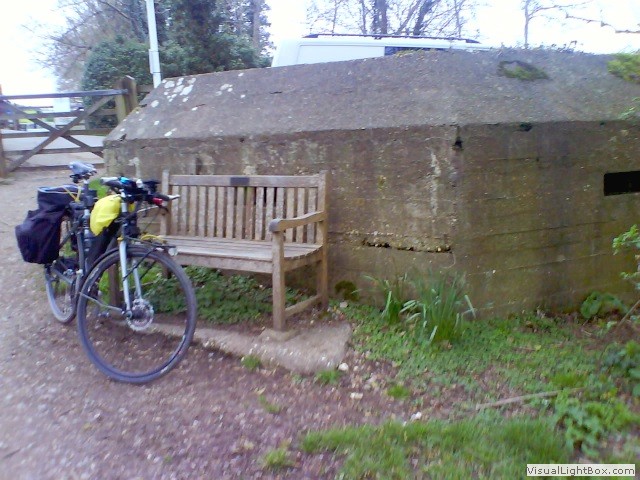 The Kennet & Avon canal, slices through the country from Reading to Bristol. During 1940, in
a matter of weeks, pillboxes and tank traps were built along the canal and manned by the
Home Guard, though at the time it was so overgrown the only invasion along the canal would've been frogs.
The Kennet & Avon canal, slices through the country from Reading to Bristol. During 1940, in
a matter of weeks, pillboxes and tank traps were built along the canal and manned by the
Home Guard, though at the time it was so overgrown the only invasion along the canal would've been frogs. -
Newbury Bridge
 Newbury Bridge is a well-known landmark along the Kennet & Avon Canal, it has been the feature of many
paintings and photographs over time and still has an alluring appeal.
Newbury Bridge is a well-known landmark along the Kennet & Avon Canal, it has been the feature of many
paintings and photographs over time and still has an alluring appeal.
